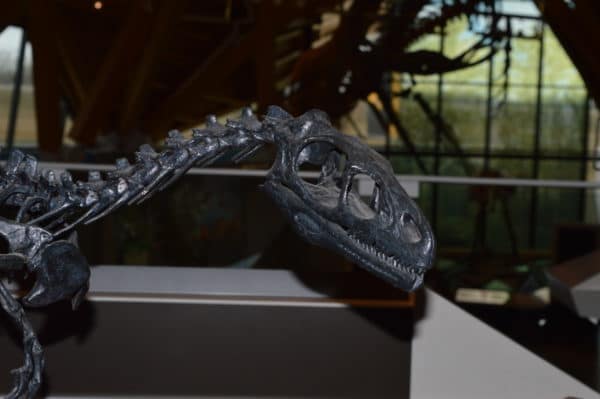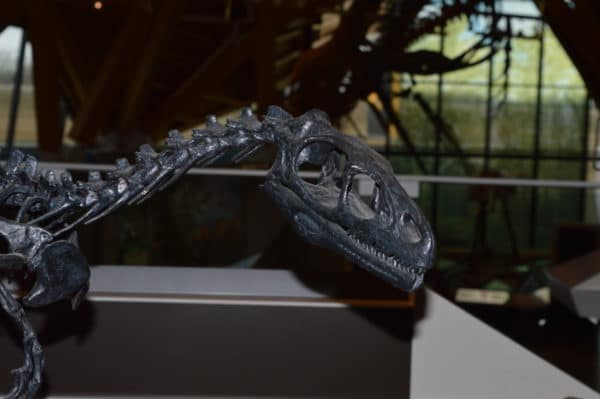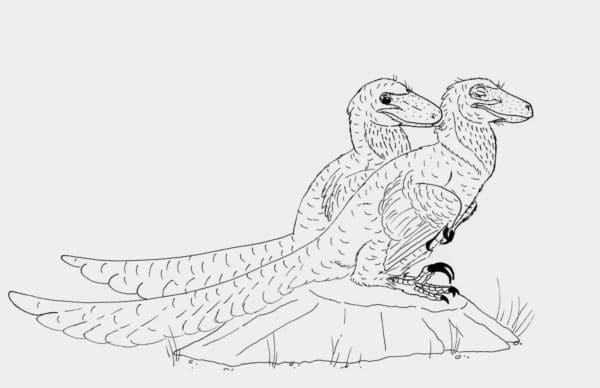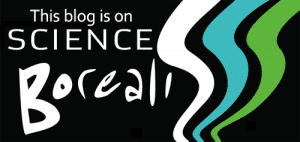
Everybody loves dromaeosaurs. With their sickle-claws, deadly teeth, and sleek build it’s hard not to find them cool. The very image of these dinosaurs has turned them into movie stars, but they weren’t always so beloved by kids and monster fans worldwide.
Around the time that Jurassic Park turned ‘raptors’ (the popular term for dromaeosaurs, although it’s only properly applied to modern birds of prey) into household names, there was a big dromaeosaur boom in paleontology. A whole assortment of these dinosaurs were being named starting in the early 90’s and continuing onward to this day. While the film might deserve some credit for getting people interested in dromaeosaurs, I suspect this ‘raptor’ boom is largely thanks to a rise in paleontologists who were more interested in studying smaller dinosaurs and the evolution of birds than their predecessors had been. With the idea that birds are living dinosaurs came more attention to their closest nonavian relatives, such as the bird-like dromaeosaurs.
Before this ‘raptor boom’, dromaeosaurs were somewhat obscure dinosaurs, and only a handful of genera had been described. In the 1920’s, American Natural History Museum paleontologists described Dromaeosaurus from Alberta and Velociraptor from Mongolia. Not much happened after that until Ostrom’s discovery of Deinonychus in the 60’s, which lit the spark for the ‘Dinosaur Renaissance’ to come. There were a couple of species named from Asia by a joint Soviet-Mongolian expedition in the 70’s and 80’s, and around that time another species was discovered in the badlands of Alberta.
In 1974 the partial remains of a small theropod were discovered by fossil hunter Irene Vanderloh in Dinosaur Provincial Park. She showed these bones to Provincial Museum paleontologist John Storer, who was not a dinosaur specialist himself (hard to imagine a time before there were dinosaur experts all over Alberta), and sent the remains to Hans-Dieter Sues. Dr. Sues is now the esteemed Curator of Vertebrate Paleontology at the National Museum of Natural History in Washington, DC, yet these small theropod fossils made their way to him during his graduate school days at the University of Alberta. Sues recognized features in these bones similar to other small Albertan carnivores like Stenonychosaurus and Dromaeosaurus, and described the dinosaur as a new species in the dromaeosaur family under the name Saurornitholestes (Sues, 1978). Don’t confuse it with the earlier Ornitholestes, which was a more basal coelurosaur from the late Jurassic often depicted in old dinosaur books snatching at primitive birds.

Saurornitholestes in the Currie Museum gallery. The black colouring of the bone casts makes it look all the more sinister. Photo by Nicholas Carter
For most of the time since this first description, no complete Saurornitholestes skeleton had been found, unlike similar-sized animals like Velociraptor with its many wonderfully preserved specimens. However, a few partial skeletons have been found, and isolated bones and teeth from Saurornitholestes are very common small theropod remains in the badlands of Alberta and Montana. This indicates that it was more numerous than contemporaries like Dromaeosaurus. Despite having a relative abundance of Saurornitholestes, we haven’t had a good idea of what exactly the species looked like, having had to fill in the blanks with material from other dromaeosaurs.
Luckily for paleontologists, in 2014 a brilliantly complete Saurornitholestes skeleton was found in Dinosaur Provincial Park, very near to where the original holotype was collected. This specimen’s skull was recently described by Drs. Philip Currie and David Evans, two of Canada’s most eminent paleontologists (Currie & Evans, 2019). This is by far Alberta’s best preserved dromaeosaur, something paleontologists can learn a lot from. So what do we know about Saurornitholestes from over 40 years of study and a swanky new skeleton to fill in the picture?
Let’s start with the dinosaur’s anatomy, or what we know so far from published material. One of the most interesting things about the Currie & Evans 2019 paper is the description of the overall shape of Saurornitholestes’ skull. Despite coming in at roughly the same size as the Mongolian Velociraptor, Saurornitholestes had a pretty different cranium. While the skull of Velociraptor is long and shallow with a distinctive curve to the snout, the skull of Saurornitholestes was deeper, with a relatively straight snout and more prominent notch between the premaxilla and maxilla bones in the upper jaw, giving the dinosaur a snaggle-toothed appearance. The stout skull and wear patterns on the large, serrated teeth of Saurornitholestes tell us that it was probably capable of killing and processing larger, tougher animals than other small theropods like troodontids could (Torices et al., 2018). A Saurornitholestes tooth was even found embedded in the tibia of a juvenile pterosaur from Dinosaur Provincial Park (Currie & Jacobson, 1995). This pterosaur bone also bore tooth marks, presumably from the same dinosaur that had been eating it. Did a dog-sized Saurornitholestes manage to bring down a large flying reptile? Well, probably not. Currie and Jacobson suspected that the pterosaur had died of other causes earlier, and a Saurornitholestes had come along and scavenged on the carcass, breaking off a tooth in the process. On a side note- this scavenged-on pterosaur, one of the most complete from Alberta, might be the newly described species Cryodrakon (Hone et al., 2019). Clearly, it’s been a big year for paleontology in Alberta!
Speaking of Saurornitholestes teeth, they’re pretty interesting in their own right. For such a modestly-sized dinosaur, Saurornitholestes had pretty big teeth, as did its contemporary cousin Dromaeosaurus. You can tell the difference between the teeth of these species, though, based on the size, shape, and pattern of the denticles (small serrations on the cutting edges of the teeth). Denticles in Saurornitholestes tend to be somewhat hook-shaped and larger on the back-edge of the tooth than the front. In Dromaeosaurus, they’re quite round like in tyrannosaurs, and the denticle row curves inwards on the front side.
One neat find, courtesy of the new skull, was the identity of Zapsalis. Ever heard of Zapsalis before? Unless you’re a major theropod tooth nerd, you might not have. Zapsalis was named by Edward Drinker Cope for a small theropod tooth collected from the Judith River Formation of Montana (Cope, 1876). This tooth has a distinctive shape- curved on the front side yet straight on the back, with a series of ridges leading up and down the sides of the tooth. Zapsalis teeth have also been found in Alberta’s similar-aged Dinosaur Park Formation, but no bones from this enigmatic dinosaur ever turned up. But then we finally got a complete Saurornitholestes skull, which bore a Zapsalis-like tooth near the front on each side of the upper jaws (Currie & Evans, 2019). It seems like Dinosaur Park Zapsalis specimens were really just specialized teeth of Saurornitholestes all along. This might mean that Zapsalis isn’t a distinct dinosaur after all, and these particular tooth-morphs are really just specialized teeth from other theropods, perhaps ones already known from skeletal remains. So why did Saurornitholestes have these unusual teeth that were differently shaped from the rest of the dentition? Based on the shape and wear-patterns of these teeth, Currie and Evans proposed that they might have been specialized grooming teeth, used by the dinosaur to preen its feathers. It’s a neat idea, since modern birds spend a lot of time grooming their feathers with their beaks. If you’re an animal with feathers, preening is important, as it keeps the feathers clean, aligned properly, and free of parasites. Lacking a beak itself, Saurornitholestes might have required something else to groom itself with, and specialized teeth might have been the answer for it and many other dromaeosaurs.

A hypothetical scenario of two Saurornitholestes engaging in social grooming, or allopreening. We can’t really tell if this species engaged in such a behaviour, but many birds today do it, so it’s far from impossible. By Nicholas Carter
The position of Saurornitholestes within the dromaeosaur family tree has always been a little contentious, thanks in no small part to the fragmentary nature of the fossils we’ve had to work with. Some studies have placed this dinosaur on its own as a basal member of the ‘true dromaeosaur’ group, which excludes earlier, weirder dromaeosaurs like the small birdlike microraptors and the slender-snouted Unenlagiinae (DePalma et al., 2015). Others have found Saurornitholestes to be a member of the velociraptorine subfamily, closely related to Asian taxa like Velociraptor, Tsaagan, and Linheraptor (Cau et al., 2017). In Currie & Evans 2019, data from the new skull suggests that Saurornitholestes actually belongs to a uniquely North American subfamily, which may have arisen from an ancestor that came from Asia, where the earliest dromaeosaurs are known from. It actually appears to be most closely related to another Albertan raptor, the robust-jawed Atrociraptor. Species from the mostly Asian velociraptorine subfamily, such as Montana’s Acheroraptor, are also found in North America (Evans at al., 2013). This suggests that at least two different lineages of dromaeosaurs migrated into North America at some point. There’s still a lot of work to do regarding the phylogeny of these dinosaurs. It’s an ever-changing family tree.
Hopefully it’s clear that Saurornitholestes is well-deserving of more time in the public spotlight. While it’s cousins like Velociraptor and, more recently, Dakotaraptor tend to get all that sweet raptor glory, perhaps Saurornitholestes will soon be just as celebrated. Hailing from such a dinosaur-rich part of the world, Alberta’s best raptor should certainly be a household name.
References
Bell, P. R., and P. J. Currie. 2015. A high-latitude dromaeosaurid, Boreonykus certekorum, gen. et sp. nov. (Theropoda), from the upper Campanian Wapiti Formation, west-central Alberta. Journal of Vertebrate Paleontology. doi:10.1080/02724634.2015.1034359
Cau, A.; Beyrand, V.; Voeten, D.; Fernandez, V.; Tafforeau, P.; Stein, K.; Barsbold, R.; Tsogtbaatar, K.; Currie, P.; Godrfroit, P. (6 December 2017). “Synchrotron scanning reveals amphibious ecomorphology in a new clade of bird-like dinosaurs”. Nature. 552 (7685): 395–399.
Cope, E.D. (1876). “On some extinct reptiles and Batrachia from the Judith River and Fox Hills Beds of Montana”. Proceedings of the Academy of Natural Sciences of Philadelphia. 28: 340–359.
Currie, P. J. and Evans, D. C. (2019), Cranial Anatomy of New Specimens of Saurornitholestes langstoni (Dinosauria, Theropoda, Dromaeosauridae) from the Dinosaur Park Formation (Campanian) of Alberta. Anat Rec. doi:10.1002/ar.24241
Currie, P. J., and A. R. Jacobson. 1995. An azhdarchid pterosaur eaten by a velociraptorine theropod. Canadian Journal of Earth Sciences 32: 922-925.
DePalma, Robert A.; Burnham, David A.; Martin, Larry D.; Larson, Peter L.; Bakker, Robert T. (2015). “The First Giant Raptor (Theropoda: Dromaeosauridae) from the Hell Creek Formation”. Paleontological Contributions (14). doi:10.17161/paleo.1808.18764
Evans, D. C.; Larson, D. W.; Currie, P. J. (2013). “A new dromaeosaurid (Dinosauria: Theropoda) with Asian affinities from the latest Cretaceous of North America”. Naturwissenschaften. 100 (11): 1041–9.
Hone, D.; Habib, M.; Therrien, F. (September 2019). “Cryodrakon boreas, gen. et sp. nov., a Late Cretaceous Canadian azhdarchid pterosaur”. Journal of Vertebrate Paleontology. doi:10.1080/02724634.2019.1649681
H.-D. Sues, 1978, “A new small theropod dinosaur from the Judith River Formation (Campanian) of Alberta Canada”, Zoological Journal of the Linnean Society 62: 381-400
Torices, A.; Wilkinson, R.; Arbour, V.M.; Ruiz-Omeñaca, J.I.; Currie, P.J. (2018). “Puncture-and-Pull Biomechanics in the Teeth of Predatory Coelurosaurian Dinosaurs”. Current Biology. 28 (9): 1467–1474.

